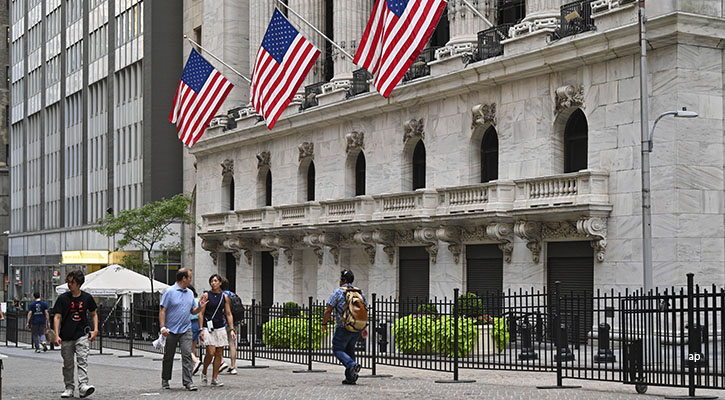First State Stewart Asia Pacific Equities team, shed lights on topics such as their team structure, how various risks have affected their investment decisions, and the major portfolio changes over last year.

Category Winner: Best Asia-Pacific Equity Fund – First State Stewart Asia Pacific Equities team
Key Stats
Inception Date: 2003 Jul 14
Morningstar Rating (as of 2015-02-28): ![]()
Total Net Assets (Mil, as of 2015-03-31): 2,855.98 USD
Manager: Martin Lau, Richard Jones
Manager Start Date: 2003 Jul 14, 2013 Jul 01
M: Morningstar F: First State Stewart Asia Pacific Equities team
M: Could you highlight any major changes you made to the portfolio over the course of 2014? Were there any particular holding that drove the fund’s performance for the year?
F: As a result of our bottom-up focus, we have added to our Indian exposure which now forms a significant part of the fund. This is due to the growing opportunity set in the consumer and infrastructure space. In many aspects, India is like China 10 years ago. Also, the quality of management at Indian companies is generally strong as they needed to operate in a tough top-down environment historically.
Significant additions to the fund over the past year included Brambles, a well-managed Australian industrial group with diversified international earnings which should provide protection against a weakening Australian dollar. We also bought Kotak Mahindra Bank, a well-managed business with good quality promoters and promising growth potential, partly through merger synergies, and Lupin, a generic drugs manufacturer with formidable brands in India and robust growth overseas.
Key contributors to the fund’s performance included Amorepacific Corp, a multi-brand Korean cosmetics product company, which rose on strong sales growth driven by visitors from China; Dabur India, one of India’s largest consumer staple companies, benefited from the strong rally in India following the election victory of Narendra Modi; and Taiwan Semiconductor, a pure play semiconductor manufacturer, performed well due to the continued growth of smartphone adoption particularly in emerging markets.
M: What is your economic outlook for 2015 specific to the markets you cover and how are you positioned to take advantage of opportunities and/or mitigate potential risks?
F: We are cautious about the health of the Chinese economy and rising political risk across the region. There is significant oversupply in the property market and overcapacity in most industries, with weakness in raw material prices such as steel. High debt levels across the economy and deteriorating working capital in businesses across the country continue to worry us. Despite our concerns, we remain positive on the China A-share equity market in the long term given the significant reforms introduced by the Chinese government and increasing participation by long-term investors. At the start of 2015, we received official approval from the China Securities Regulatory Commission (‘CSRC’) for an additional US$410 million QFII quota, making it one of the largest single approval granted to investment manager. Apart from this, we are also one of the first few global investment managers to be active in the Hong Kong-Shanghai Stock Connect Programme launched in November 2014, which will allow us to have quicker access to China A equities and more flexible holding periods.
The Indian market may have extended ahead of itself due to the euphoria of Narendra Modi’s election triumph as Prime Minister in May 2014. While we believe that progress is being made on the reform front in small incremental steps in areas such as the labour market and land purchases, investors may have been too optimistic about what can realistically be achieved. In spite of this concern, we have no immediate plans to change the level of our Indian exposure because of the high quality companies which the country offers.
M: Can you comment on the macro risks facing the global economy, including potential US rate hikes, QE programs in the Eurozone and Japan, and the growth headwinds facing the emerging world? How do these risks affect your investment decisions?
F: We are operating in a slow growth and low rate environment. US may do better, while Europe may still struggle a bit. We do believe China’s growth will structurally come down, and therefore we are light on commodities. Our focus is still more on the domestic consumption side, which we see longer-term upside.
Expectations of a US rate hike have already triggered long bond yields to go up in Asia, a strengthening of US dollar and repatriation of capital from certain Asian countries. Like the Fed QE program, the latest QE-like programmes of the European Central Bank and Bank of Japan have caused asset prices to continue rising regardless of fundamentals. New ideas are scarcer than before and quality companies are very expensive.
At First State Investments, we use a ‘bottom-up’ approach to stock selection, so while we are always mindful of the economic and political outlook of the markets which the companies operate in, our focus on finding good companies at reasonable prices does not change. Once we identify the companies that exhibit characteristics such as strong cash flows, low debt and growing dividend yield, we will invest and hold on for the long term.
M: How is your investment team organized? Have there been or do you anticipate any changes to the investment team or structure over the course of the year? Do you anticipate adding to the team in the near future?
F: Embracing a boutique culture, our equity investment team operates under a flat structure involving all team members in decisions. The strength of our investment philosophy attracts a certain type of investor who would find it hard to fit in at many other teams or firms. The team is incentivised mainly on the long-term performance of the overall portfolio. While individuals are assigned specific geographical responsibilities, all members are involved in the total portfolio, which means broader experience for each individual and better management of key person risk.
There has been no major change to the investment team and structure over the course of the year. Over the long term, we continue to keep the investment team dynamic to allow more flexibility to act on the best interests of our clients, and also for the long-term sustainability of the team. We will be looking to add more resources to support the ongoing development.
M: Can you highlight any areas where you feel that the investment team or the investment process can be improved upon?
F: Our conservative investment style has at times led us to focus too much on the risks and hence missing out on substantial upside. For example, our negative view on the Australian dollar and economy over the last decade meant that we did not hold any Australian banks, missing out on substantial upside in share prices. We had little exposure to South East Asia (Indonesia, the Philippines and Thailand) markets, which performed very strongly over the last ten years. However, we believe our philosophy of focusing on preserving capital is a vital component in providing good returns for our investors over the long-term.
Over the next decade we expect to see an expansion of the investment universe as other markets become more prominent. We anticipate that the portfolio may contain companies from Bangladesh, Burma, Cambodia, Sri Lanka or Vietnam over the next ten years and that we would be adding resources to the team to support this expanded research.
Click here to see other winner features.

















